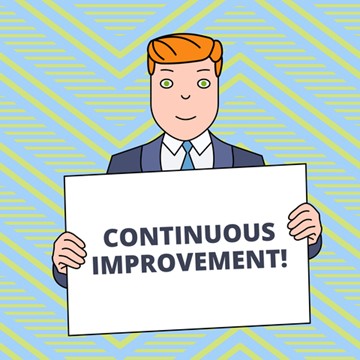by virtualworks | Aug 13, 2023 | Business, business growth, Customer relationships, Leadership, Marketing, Mastery, office management, Outsourcing, Productivity, Team Work, Time Management, Virtual Assistant, working from home, working remotely
 When you think of the most expensive admin assistant on the Planet, you might think of someone like Tony Stark’s assistant who puts up with all his quirks, but who is handsomely paid for her hardship. Or a billionaire’s assistant who is available 24/7 and at a moment’s notice may be called upon to drop everything and jump on a plane to Tokyo to attend meetings with their boss. You might think that…… and you would be wrong.
When you think of the most expensive admin assistant on the Planet, you might think of someone like Tony Stark’s assistant who puts up with all his quirks, but who is handsomely paid for her hardship. Or a billionaire’s assistant who is available 24/7 and at a moment’s notice may be called upon to drop everything and jump on a plane to Tokyo to attend meetings with their boss. You might think that…… and you would be wrong.
YOU.. yes.. you… are the most expensive admin assistant on the planet.
How can this be true? It’s because studies show that administrative tasks take up as much as 25% of an organization’s time.
So, what does this mean? Before we even talk about the dollar cost of this truth let’s talk about time. As a business owner, working a very conservative 60 hours a week, this equates to 15 hours per week. Which may not seem like that much, but how about when we look at the annual cost of this truth?
720 HOURS per year the average business owner spends on administrative tasks, that’s THREE MONTHS! Take that 720 hours and multiply by your client charge out rate. Not only is that a lot of money for doing back-office work that you shouldn’t be doing in the first place, it’s also money you haven’t billed because you’ve been doing “the paperwork”. If you outsourced these tasks alone at a much lower rate (hopefully) than you bill your clients, just think what you could do with an extra three month’s worth of time and a whole lot of extra money every year!!!
- How could your organization grow?
- What activities could you do with your family?
- How could you invest in your network and members?
- How could you serve your community?
If you have ever thought, “if only I had more time…” (you know that’s just an excuse, right?!?) and yet repeatedly find yourself burning the midnight oil filing invoices, inputting information into a database, updating your social media (or wishing you had time for social media)…
Everyone has the same 24 hours in a day so why not change things up and use those hours to full advantage?
by virtualworks | Oct 23, 2022 | Business, business growth, Leadership, Marketing, Mastery, office management, Productivity, Remote Office Management, Time Management, Virtual Assistant, working from home, working remotely
 Have you ever come out of a meeting, or the end of day and caught yourself in a mirror and realized that you have a piece of schmutz in your teeth, or your cow-lick is asserting its personality again? We have all had that moment when we think “WHY DIDN’T SOMEONE TELL ME?”
Have you ever come out of a meeting, or the end of day and caught yourself in a mirror and realized that you have a piece of schmutz in your teeth, or your cow-lick is asserting its personality again? We have all had that moment when we think “WHY DIDN’T SOMEONE TELL ME?”
As small business owners we can spend so much time in the tasks that we forget what our goals are. If only gauging how well we are running our business is as simple as looking in the mirror! When it comes to taking your business to the next level, a level of self-awareness is required to assess the needs of your business and how your management style can be maximized for growth.
Take a look at your business and your strengths and values (and be honest about it!). Determine what makes sense for you to do and what is reasonable for someone else to take care of.
To identify exactly what you need, do the following for one work-week:
- As you go through each workday, write down the daily tasks that you dislike doing (or, put another way, make a list of the things you do last because you keep putting them off)
- Write down all the projects you’ve “had on the back burner”; those projects and tasks that never seem to get done week after week, month after month.
- Write down all the things you spend too much time doing (why are you really in the office all the time?).
- Write down all the things you wish you had more time to do.
- Write down all the tasks you must do as a business owner.
Ask people you know to work through this with you as they may provide a different perspective. There might be metaphorical spinach in your teeth that they are begging for the chance to tell you about!
Don’t think about how much it will cost or how long to get these resources in place. Just think about you for now and ask yourself what you need to do in order to move your business forward.
Need help? Click here to get my free e-book to help you gain clarity.
by virtualworks | Aug 1, 2022 | Business, business growth, daily lfe, holiday, Leadership, Mastery, Productivity, Time Management
 In a previous blog post, we discussed un-plugging from the virtual world including from media, and from work, as I do in the summer to take some much-needed time off at a cottage in the remote Quebec countryside for a week of peace and quiet. Upon my return, everything is still functioning, even though I’ve taken a full week to un-plug.
In a previous blog post, we discussed un-plugging from the virtual world including from media, and from work, as I do in the summer to take some much-needed time off at a cottage in the remote Quebec countryside for a week of peace and quiet. Upon my return, everything is still functioning, even though I’ve taken a full week to un-plug.
This year though, COVID came for me just prior to leaving so I didn’t do much more than sleep. Usually, though, I spend the entire week reading, knitting and writing. I love to kayak on the lake in the mornings when the water is still. It’s very peaceful and lets me just think about things without all that daily noise in my head. Some might say that I’m downright lazy during my week off. Is that okay? Yes, it certainly is because I deserve it. Do I miss technology when I’m at the lake? No, because I don’t need it there.
For those that are making the attempt to relax and take a break from work and media, but don’t want to travel, a ‘staycation’ may be an option. Whether by themselves or with family in the house there are a variety of ways to relax such as spa-at home days, reading, creative projects, music, further learning or games. No matter what the relaxing activity there are plenty of ideas out there to get the staycation started!
While the suggestions below may require some online research to get started, once the information is found, there is a choice to shut off this technology or enjoy it depending on the person. Maybe they are a true “no tech staycationer” or maybe they “un-plug” while playing online games, watching movies, listening to music and so on.
In the spirit of getting the staycation underway, here are a few resources if you are not sure what to do:
Want to relax in your personal spa? The PennyHoarder has some fantastic ideas for creating materials for a spa at home and as a bonus creating some of these can be considered a little project!
Do you have a creative side and would love to work on something, but are not sure what? DIY Projects has a few ideas to check out. Maybe you just want to enjoy art or music from home, but don’t have access to great works of art or music. Check The Guardian’s list of virtual museums and art galleries, Billboard’s and Glamour’s lists of virtual concerts and performances. Even orchestras have live performances online as listed on classicalfm.
Do you just want to learn something to keep your brain moving or perhaps you miss the library completely? There are a number of open university courses out there to get you thinking and OpenLibrary is an excellent online library if you are just looking for something to read.
Or maybe you want to get up and get moving, take a look at Runtastics 28-day at home workout.
It doesn’t matter how you “un-plug”. What matters is that you bring yourself to a place of relaxation and contentment, while staying safe.
by virtualworks | Jul 3, 2022 | Business, business growth, Productivity, Social Media, tech tips, Time Management, working remotely

Our guest blogger is Loreto Cheyne of Lola Design. Summer is a great time to work on your branding and marketing gear, getting ready for the busy 4th quarter…
After what seemed like an endless winter, summertime’s here, and that means joining colleagues at a patio, leaving the office early, and honing your BBQ skills. It’s a nice fantasy-but if you’re a business owner, it means if there’s any downtime, you’ll likely be catching up on the marketing projects you had hoped to tackle much earlier in the year.
You may not have days on end to devote to marketing catch-up. But if you can organize your projects and time, here’s three things that will let you communicate a little easier in the fall and have you ready for more marketing and networking:
1) Update your business cards. I’m always going on about the importance of your business cards, and with good reason. If social media is part of your marketing mix, be sure to have your contact info on your business card. You can:
- add the actual URL (ex. www.linkedin.com/in/loretocheyne)
- simply use the social media icon (blue “bird” for Twitter)
- incorporate a QR code that when scanned takes readers to your blog.
2) Take a look at your marketing calendar and review major events coming in the fall. If you have a conference or a tradeshow you have already committed to, this is the time to do the prep work. If your tradeshow is October 1, don’t wait until September 25 to get your signage ready, or your rack cards, or sellsheets. Get ahead of the game now so you can do it right, proof properly and avoid rush charges. That way they are done, printed, and you can forget about them.
3) Do a logo inventory. Is your logo still working hard for you? Because if it isn’t, now is the time to alter it, or completely redo it (not a week before your new ad campaign is launched). Find a designer you can work with (I will be glad to set up a consultation with you) and be sure to discuss your needs, likes, dislikes, deadlines and budget. Be realistic. Make sure your logo is created as a vector file, which will give you the most versatility over the long run (that’s an Illustrator .eps or .ai file).
These three marketing communication tips should give you plenty to fill up those pockets of “spare time” you may have this summer!
Loreto Cheyne is the principal and owner of Lola Design, an Ottawa-based graphic design studio. To book your complimentary consultation, email loreto@loladesign.ca
Website:www.loladesign.ca
Blog:www.loladesing.ca/blog
by virtualworks | Feb 13, 2022 | Accomplishments, business growth, Leadership, Mastery, Productivity, Team Work, Time Management
Many organizations start with a great idea that will change the world and, through time and effort, they will evolve to be the best in their field. Though you might not think of it these terms, but what they’re doing, what they’re actually reaching for, is “mastery”.
You know this, because you have steered your non-profit through adversity and success, put in the hours of work, training, research, and sweat to make a difference. I don’t have to tell you that becoming the ‘master of business’ requires hard work. Malcom Gladwell would tell you that it takes 10,000 hours of “deliberate practice” to master a skill.
Imagine watching the best Formula One driver, or the most incredible ballerina. They make their chosen trade look so easy and accessible. It is only when you attempt to duplicate the complex beauty of the Dance of Sugar Plum Fairy (reported to be one of the most difficult roles to dance) or harness 1000 horsepower around a turn pulling 3 G’s in a Formula-1 car, you realize that just because something looks easy doesn’t mean it is.
And that may be true for something like ballet or the violin where the skill is quantifiable. Becoming a master of your non-profit or association is much more than “time in” on any endeavour.
As I look around there are any number of organizations providing services to their members, value to their donors, exposure to their sponsors in any number of ways. What separates the successful from those who have become a master at their industry is a gritty combination of discipline, hard work, humility and generosity. Most of us would agree with the first three, but generosity?
There’s an old adage, “if you want to learn something well, teach it to someone else”. In order to teach well, it requires that you face your presuppositions about things, unearth those ideas that you didn’t even realize you believe. Being the master of any subject (even one that you invented) requires you to be able to objectively look at whatever you’re doing and seeing ways it can be improved. To teach someone else what you know requires a certain generosity. After so many years of ‘doing you’, that can be difficult, but that generosity has the reward of unearthing flaws in your system in order to improve them, and you cannot master what you think is perfect.
Now expanding on the generosity of teaching and of talent development, you gain the opportunity to:
- Invest: You are investing time leading to growth as an organization and investing in another person. How great is that?! Can you imagine if Bill Gates just did it all himself without bringing in a team? Bringing in others to be a part of your team grows your organization and its mandate.
2. Discover Improvements: By letting others in on your system of doing things and teaching them how to do what you do they may discover and share new ideas and improvements you had not initially thought of. (another ‘set of eyes’ is always a good thing)
3. Trust and Grow: By trusting your team to deliver, instead of always just yourself, you free up time to do more and expand.
So while you’re changing the world, be generous, develop your talent base and grow!
 When you think of the most expensive admin assistant on the Planet, you might think of someone like Tony Stark’s assistant who puts up with all his quirks, but who is handsomely paid for her hardship. Or a billionaire’s assistant who is available 24/7 and at a moment’s notice may be called upon to drop everything and jump on a plane to Tokyo to attend meetings with their boss. You might think that…… and you would be wrong.
When you think of the most expensive admin assistant on the Planet, you might think of someone like Tony Stark’s assistant who puts up with all his quirks, but who is handsomely paid for her hardship. Or a billionaire’s assistant who is available 24/7 and at a moment’s notice may be called upon to drop everything and jump on a plane to Tokyo to attend meetings with their boss. You might think that…… and you would be wrong.




Recent Comments